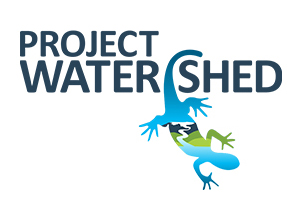Forage Fish Field Day
In 2019, Project Watershed began a 3-year collaborative project between citizen scientist volunteers, community partners like the K’ómoks First Nation, North Island College, and the BC Salmon Restoration and Innovation Fund (BCSRIF) to investigate forage fish. Project Watershed is collecting data on beaches in the Comox Valley, Campbell River, and the Islands of Cortes, Hornby, and Quadra.
Generally, little is known about forage fish and their spawning habitats. Forage fish are important fish in the aquatic food chain. They are food sources for salmon, humpback whales, and other species of concern like the rhinoceros auklet. They are small schooling fish. Some of the more common forage fish include herring and eulachon. There are seven species of forage fish found in the coastal BC waters (Pacific herring, capelin, eulachon, Pacific sand lance, surf smelt, Pacific sardine, and Northern anchovy). Project Watershed is focusing on Pacific sand lance and surf smelt as these species spawn on beaches just below the high tide line. Forage fish habitat is threatened by climate change, human disturbances, and seawall construction.
Thank you to the many volunteers who have supported this project. This video follows a field day, from sampling to the counting of eggs, in the late fall of 2019.
Project Watershed thanks the Comox Valley Art Gallery’s Youth Media Project for helping create this video.
Please share!
Related Posts
Kus-kus-sum: End of Season Wrap-up
Now that we have put the Kus-kus-sum site to bed for the winter, we wanted to give you all a little update on how things progressed this season – lots happened!
Kate McKeown
Meet our new Forage Fish Technician!
Greenshores at Dyke Road Park – Reimagining a Park
On September 20 and 21, over 20 people were on site to help with planting at the Comox Valley Regional District’s (CVRD) Dyke Road Park redevelopment project.
Gartley Beach Green Shores for Homes Project
Project Watershed is teaming up with the CVRD and the Stewardship Centre for BC to do some shoreline restoration at Gartley Beach in Royston.
Fall and Winter Forage Fish Sampling
We’re gearing up for the fall/winter season of forage fish sampling!
Mallard Creek Riparian Planting
We will be planting native riparian species along a section of Mallard Creek that we recently cleared of invasive Reed canarygrass.

